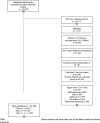First stage progression in women with spontaneous onset of labor: A large population-based cohort study
- PMID: 32976520
- PMCID: PMC7518577
- DOI: 10.1371/journal.pone.0239724
First stage progression in women with spontaneous onset of labor: A large population-based cohort study
Abstract
Objective: To describe the duration, progression and patterns of first stage of labor among Swedish women.
Design: Population-based cohort study.
Population: Data from Stockholm-Gotland Obstetric Cohort 2008-2014 including ¼ of all births in Sweden, the final sample involved a total of 85,408 women with term, singleton, vertex, live fetuses experiencing spontaneous labor onset and vaginal delivery with normal neonatal outcomes.
Main outcome measures: Time to progress during first stage of labor using three approaches: 1) Traverse time in hours to progress centimeter to centimeter, 5th, 50th (and 95th percentile); 2) Dilation curves for different percentiles, and; 3) Cumulative duration for the 95th percentile by parity and dilation at admission.
Results: Variation in both the total duration and the trajectory of cervical change over time is large. Similar to the general held view, the rate of cervical dilation accelerates at 5-6 centimeters. Among nulliparous women, the median time found in our population was faster than their counterparts in studies conducted on American and African cohorts. Among nulliparous and multiparous women our data suggest that the median cervical change over time is faster than 1 cm per hour during the first stage of labor. However, traverse time of cervical change at and beyond the 95th percentile is longer than 1 cm per hour.
Conclusions: Labor progression varies widely and labors experiencing a prolonged first stage can still result in normal outcomes. The assumption of 1 cm per hour cervical dilation rate for the first stage of labor may not be universally meaningful. There are differences in progression for women during first stage of labor in different populations. For prolonged labor progression to be more clinically meaningful, the association with adverse birth outcomes needs to be further investigated in specific populations.
Conflict of interest statement
Competing interests: The authors declare no competing interests.
Figures







References
Publication types
MeSH terms
LinkOut - more resources
Full Text Sources

